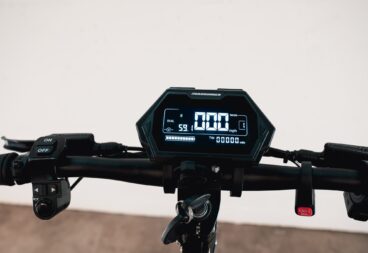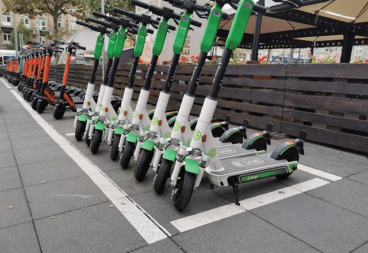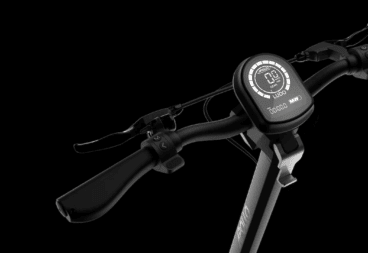Scooter racing is coming. Let’s get ready to go fast the safest way possible.
Why Go Racing
Simply put, motor racing is one of the most intense and exhilarating things a human can do. Have you ever felt the adrenaline rush of narrowly escaping a traffic collision on your way to work, where your driving and riding skills make the difference between safety and crashing?
Now, imagine stretching out that very intense 2 seconds of your life so it repeats in slightly different ways for 15 solid minutes. Racing is sort of like that. This won’t sound like fun to everyone, but for those who love adrenaline, there’s really nothing like it. Positive side effects may include vastly increased street-riding skills and reduced urges to take risks while riding on the street. Negative side effects may include everything else in life feeling a little less exciting than it used to.
Scooter Racing Is Good for the Planet
Say what? How does racing a scooter help save the planet? Racing will reveal weaknesses in vehicle design faster than any other activity. Even better, racing always tells the truth: if you broke it, it’s a weakness. As manufacturers get involved in factory racing efforts, or even in sponsoring amateur racers, they will quickly learn the weak points of electric scooters, allowing them to build longer-lasting more reliable scooters.
Where Electric Scooter Racing Stands Today
At the moment, opportunities to race electric scooters are limited, but growing rapidly. There are active racing programs in the Philippines at the Carmona race track (above), hosted by Kaabo Philippines and Ekstreme Scooters, and at the Kartodromo XRP in Cajica, Columbia. Locally, a PEV race has been announced for May 8, 2021 in Apple Valley, CA (USA), which will include classes for electric skateboards, electric scooters and presumably EUCs as well.
On the professional level, the Electric Scooter Championship (eSC) is a worldwide series of races featuring spec scooters, so riders will be competing on scooters of equal performance. The series is recruiting racers as of March 2021, and you can apply online to participate. The organizers are mainly seeking professional athletes for the inaugural season, presumably because their fame will bring viewers to this brand new professional motorsport.
Keep an eye out for racing opportunities in your area. A good place to check for all sorts of PEV races is on the events schedule page of websites for local racing circuits and go kart tracks.
Fundamentals of Electric Scooter Racing
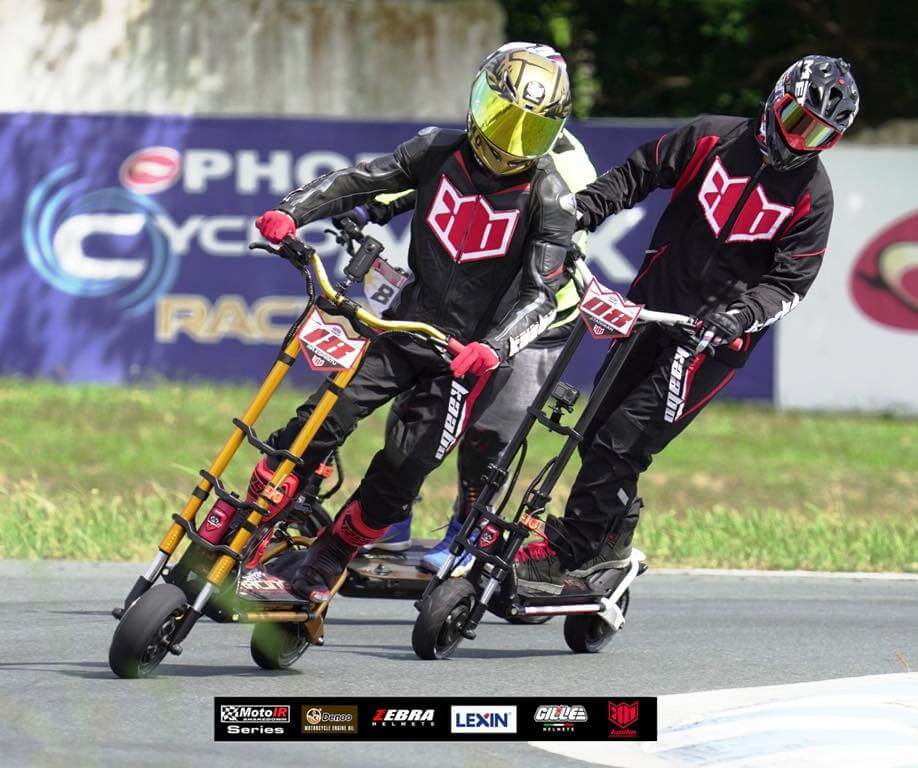
Will you need a $6,000 hyperscooter if you’re going to be competitive? Probably not. Most racing series will have several classes of vehicles, based on criteria such as power, weight, possibly even vehicle cost. Some racing organizations will base classes on qualifying times, so you can end up racing just about any scooter in classes like Open-Novice, Open-Intermediate, and Open-Expert, depending on which group you qualify into.
Picking a Scooter for Racing
The important thing is to get a scooter you’re comfortable with, and that will give you good feedback.
In other words, a scooter that gives you warnings indicating when you’re approaching the limits of traction during braking, cornering and acceleration. Whatever size scooter you choose, you’re going to need a scooter with large pneumatic tires. Solid tires will not work. If you’re lucky, and the rules allow it, you’ll be able to find a set of PMT-brand racing slicks that will fit your wheels.
After tires, the next most important element is suspension. You cannot go fast on a racetrack without suspension. You just can’t. Suspension means springs and damping. Having spring-only suspension isn’t going to work as well as having suspension that has springs and good damping.
Some Dualtron and Inokim scooters feature suspension based on rubber bushings. This type of suspension works very well because the rubber acts both as spring and damper, stopping suspension oscillations, and helping the scooter settle down when transitioning from full throttle to full brake. The only downside of rubber cartridge-style suspension is that it tends to fade when it gets hot, becoming softer and having less damping the harder you ride. Ideally, you want your suspension to stay the same as it warms up.
The very best suspension systems you’ll find on electric scooters are oil-damped, spring-based suspension systems like those found on motorcycles. There are some aftermarket shocks which can provide this sort of support, but it’s not always easy to find one with the correct fit and spring-rate for your scooter.
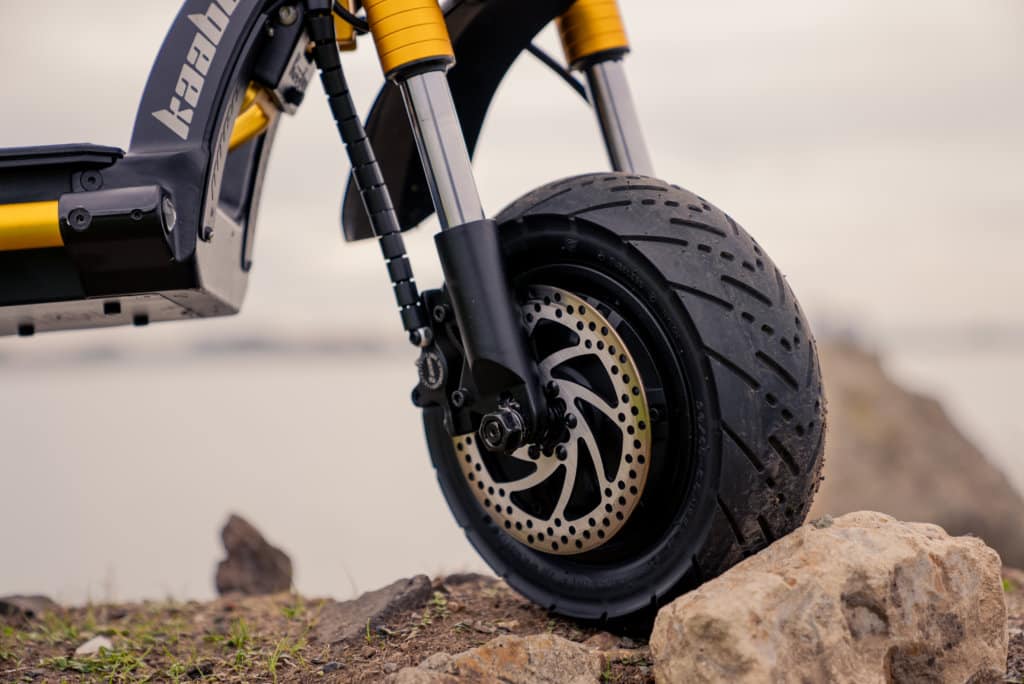
The Kaabo Wolf Warrior and Wolf King scooters both feature spring/hydraulic suspension in the front end, which is fairly good as-delivered. Out of the box, both Wolf scooters have the closest thing to racing suspension that we’ve tested.
Prepping Your Racing Scooter
You might think prepping your scooter for racing is mainly about making your scooter faster. Actually, it’s mainly about making your scooter safer. After all, “to finish first; first, you must finish.”
The most basic safety check you can perform is to make sure that all of your fasteners are tight, that your brakes are correctly adjusted and/or bled, and that your tires are correctly inflated and have enough tread.
The next level of preparation would be to install nylock nuts anywhere that regular nuts are used. They do an excellent job resisting coming loose. For bolts without nuts (i.e., bolts that screw directly into the scooter), your best bet is to remove the fasteners, clean them with alcohol or brake cleaner, apply a drop of blue loctite and reinstall them.
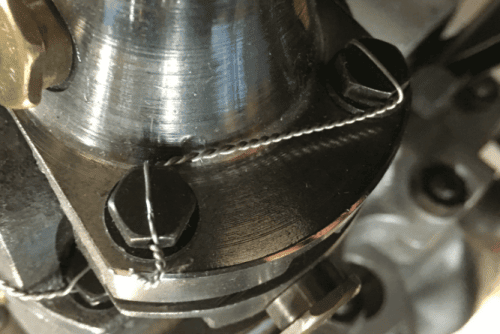
If you want to take your safety prep to a professional level, invest in a good pair of safety wire pliers, some stainless steel safety wire, plus at least 10 drill bits of 1/16th in diameter. There are many videos on the subject of safety wiring vehicles, but the jist of it is that you drill holes in the heads of bolts, and then wire neighboring bolts to each other so that the wire pulls each bolt against each other in the “tighten” direction. Race cars, racing motorcycles and aircraft have been using this technique to secure fasteners for decades.
Making Your Scooter Faster
There are some elements of race prepping which will help you go faster, such as tire pressure, suspension changes and P-settings.
Tire pressure
Number one is tire pressure. You will want to run a lower tire pressure on the racetrack than you do on the street. Stock scooter tire pressure specs are determined for maximum efficiency and range. While high tire pressure will give you lower rolling resistance and higher top speed, lower tire pressure (within limits) will give you a larger contact patch, higher tire temperature, more traction and better tire feel.
Finding the ideal tire pressure for your scooter will take some experimentation, but will most likely be between 30 lbs and 40 lbs. Tire manufacturers and other racers may also have useful information about the best tire pressure to run at the track. Check your tire pressure at least once a day, preferably first thing in the morning, for sake of consistency.
Suspension
Suspension adjustments can be as simple as adjusting ride height or preload, or as complicated as modifying and swapping out suspension components. Suspension changes can be expensive and complicated, so your best bet here is to start with a scooter that has good suspension to begin with, such as a Dualtron, Inokim OXO, Kaabo Wolf Warrior, or Kaabo Wolf King.
P-settings
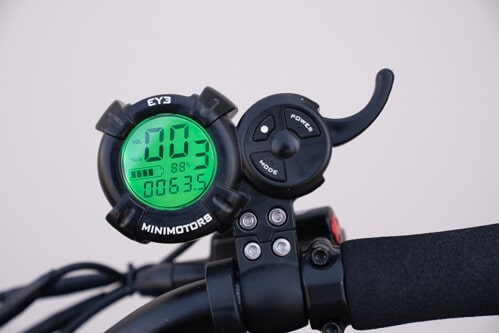
P-settings are important, too, and some of the adjustments may be counterintuitive, particularly the initial torque settings. For straight-line acceleration, turning initial acceleration up to maximum is the way to go. However winning races on road courses isn’t about straight-line speed. You may find that adjusting “torque” or “initial acceleration” downward can actually help you carry more speed smoothly through corners and get on the throttle sooner when exiting corners.
Other P-settings to consider are for regenerative braking. For best braking feel and consistency, you will want to use a small amount of regen, 1 or 2 on a scale of 5. Higher settings than this will upset the scooter as you enter corners and could also damage your motor controllers, as the controllers aren’t designed to accept large amounts of energy at the pace encountered at the track. On the plus side, using some regen will help keep your mechanical brakes from overheating, and will put a little energy back into your battery.
For more on scooter tires, p-settings and scooter throttles, check out our technical guides.
Safety Gear Helps You Go Even Faster
Safety gear obviously keeps you safe, but can also help make you faster. Having top quality gear that fits well, and the peace of mind that comes from wearing it, can help you keep focused, relaxed and fast.
Let’s start at the top.
Essential Racing Gear
Get a top quality full-face motorcycle helmet, preferably one which is Snell or ECE approved, and keep your faceshield down to protect your eyes. Most racing organizations will require that your helmet be less than 5 years old.
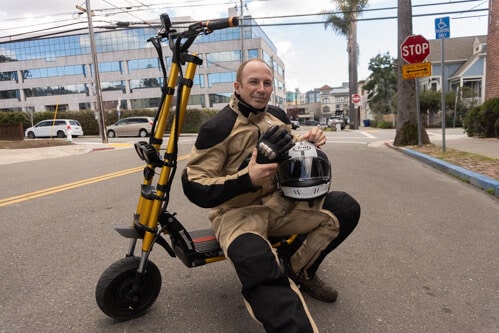
To protect your body, nothing beats a good set of one-piece motorcycle racing leathers. The next best choice for body protection is a one piece ballistic nylon suit such as an Aerostich Roadcrafter. If you’re wearing leathers, or a ballistic nylon suit, you’ll need a back protector underneath your suit. Back protectors resemble a kidney belt with armor plates covering your spine.
Some electric scooter racers are wearing jeans and long sleeve shirts with off-road style body armor. This type of body armor is the bare minimum (or possibly below the bare minimum), and may not be enough protection for the racing organization to allow you onto the track, but check with local race organizers.
Next up, gloves! Gloves are a really solid investment. A good set of racing gloves is going to cost between $150 and $300, and are worth every penny. They’ll give you good brake lever feel, and excellent abrasion and impact protection. Go to a local motorcycle shop, and take your time selecting and buying gloves with the right fit.
Finally, boots. At the very minimum, you’re going to need leather hiking boots which rise at least an inch higher than your ankle (check local racing rules). Your best bet for abrasion and ankle protection will be to choose a set of high quality motorcycle roadracing boots.
Here’s a necessity that’s easy to forget: health insurance. Many racing organizations will not let you on the track without proof of health insurance. Even if they will let you out there without it, just don’t do it. A simple fall could end up bankrupting you.
Bring Spare Everything (Even a Backup Scooter)
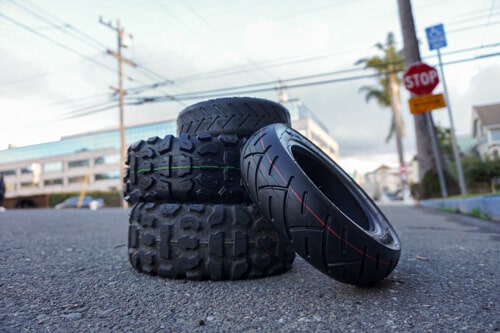
No matter how well prepared your scooter is, you’re going to need spares. Bring a set of brake levers, brake pads, rotors, extra chargers (especially if you have two charging ports), tires, motor controllers, throttle assembly, grips and even a spare battery if you can swing it. Even better, bring all of this and a spare scooter. That way if you have a fall or a failure and don’t have time to install the spares, you can switch to your backup scooter and still get out there and race.
If it’s your first time out, it’s actually not a bad idea to bring multiple scooters and race in more than one class if you can to gain practice on the track. Given the time required to charge between sessions, bringing several scooters will be your best bet to pick up maximum track time.
Essential Pit Preparation
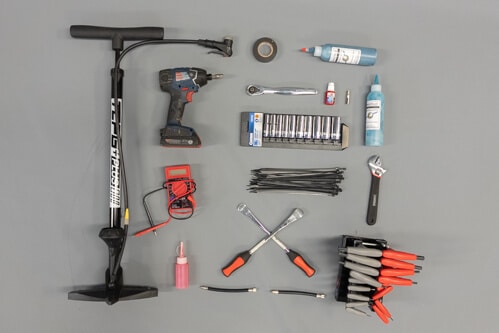
Bring every tool you can carry that would possibly be relevant. Don’t forget a bicycle pump, tire slime, tire irons, a milk crate (workstand), voltmeter, rubber gloves, tire stem extenders for airing up, spare brake oil for hydraulic brakes and. of course, zip ties and duct tape (get black, because it’s classy). A small electric impact wrench and allen bits could also come in handy if you need to open the deck in a hurry to check connections. A compressed air tank helps too for quick top-offs, or seating the beads on tubeless tires. One tank full of air should keep you going the whole weekend.
For charging at the track, bring a super long extension cord and some quality power strips. Be sure to find out what access is available for charging. Rent a garage if you need to. If you want guaranteed access to power, buy or borrow a small portable generator. Even a small 2000 Watt generator will be more than enough to charge two large scooters at the same time.
Conclusions
Racing is one of the most fun and rewarding activities you will ever do, if you have the means, the time and the will to do it well.
We’ll leave you with this final thought: Don’t try to win it all on your first weekend. Just getting yourself out there is a big deal. For your first weekend at the track, if you manage to a) not crash and b) not come in last, that’s a win.
If you like this article, let us know in the comments below and we can write more on the subject, like riding techniques for new racers.
